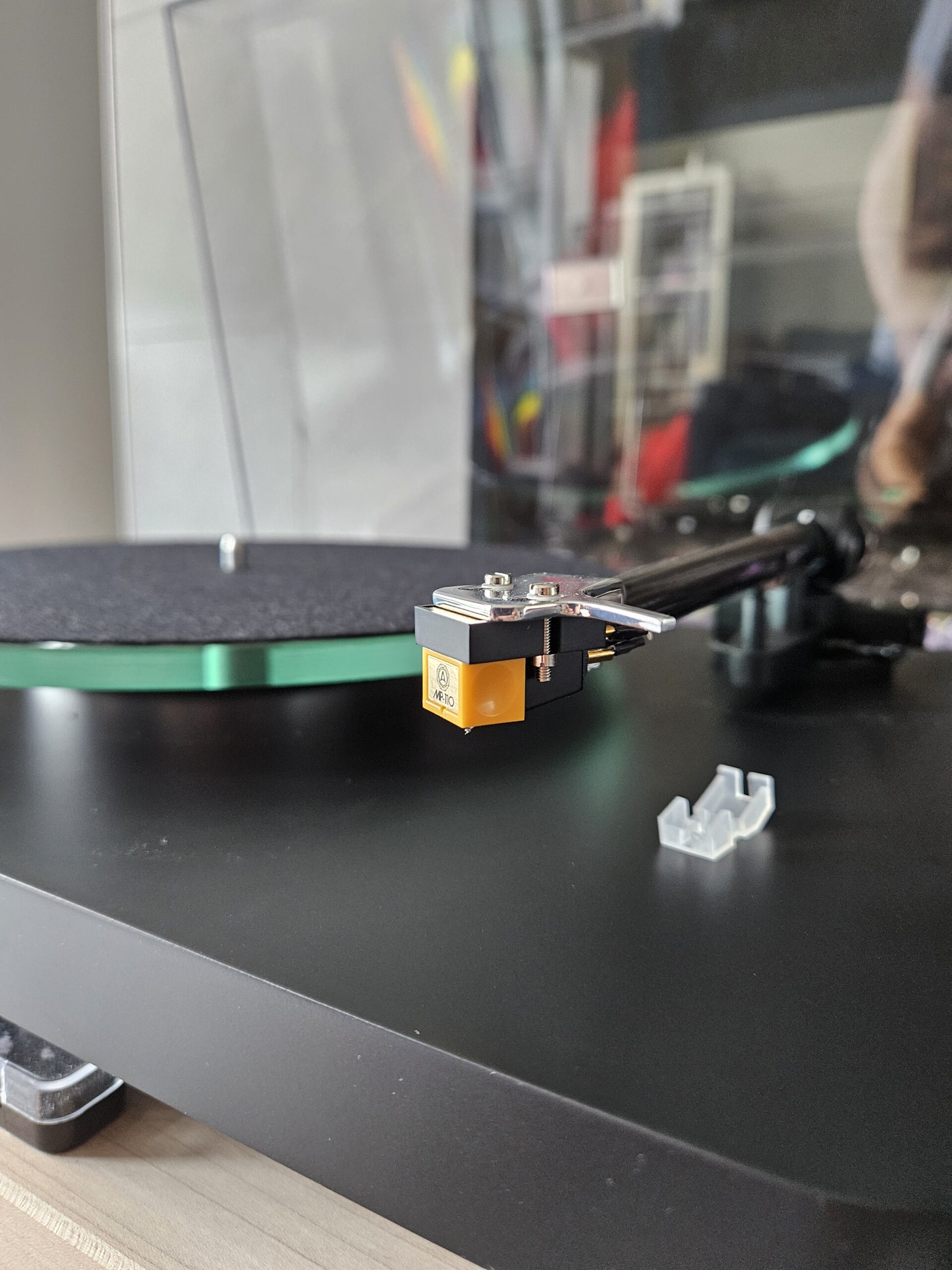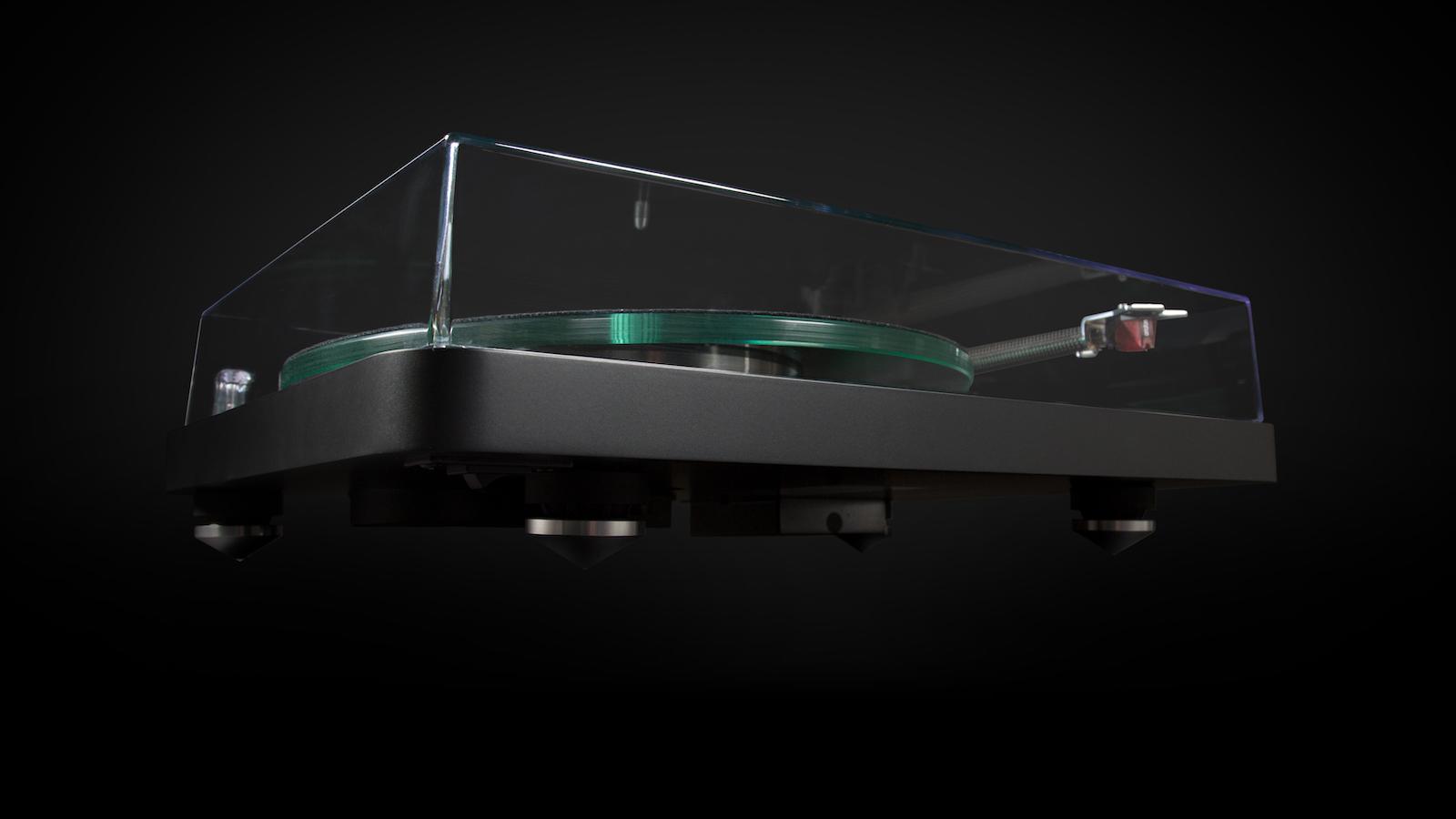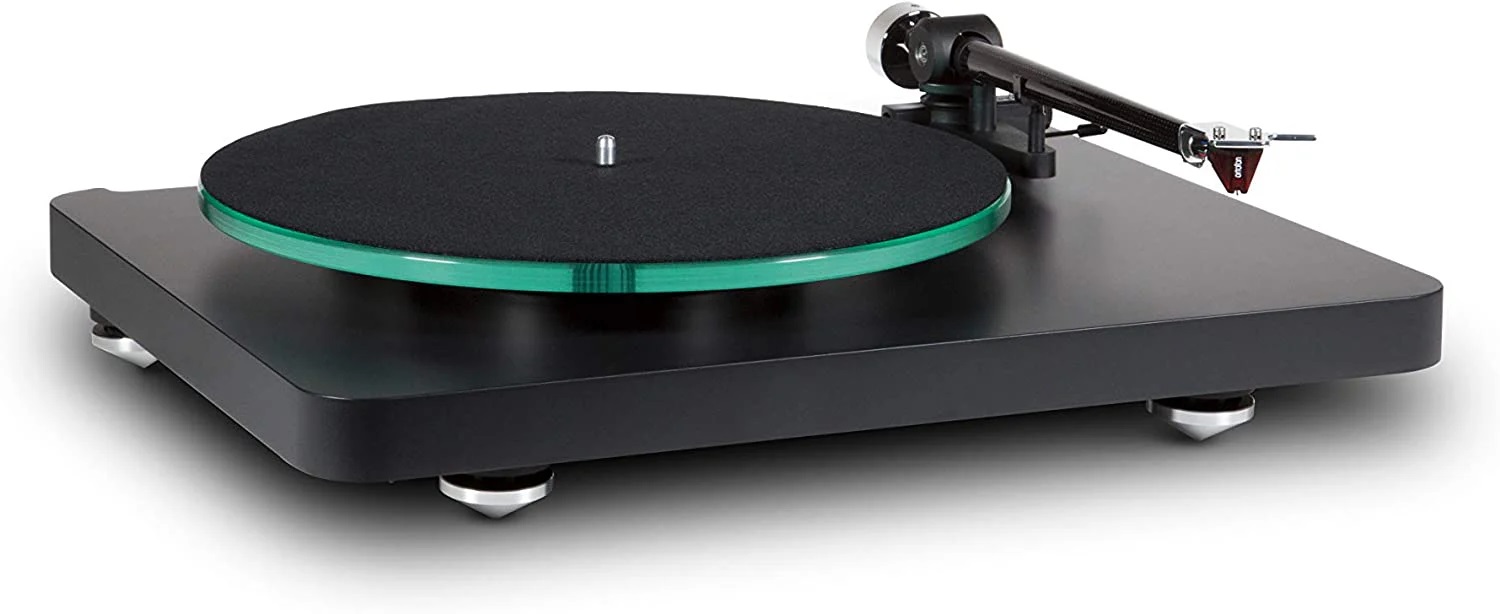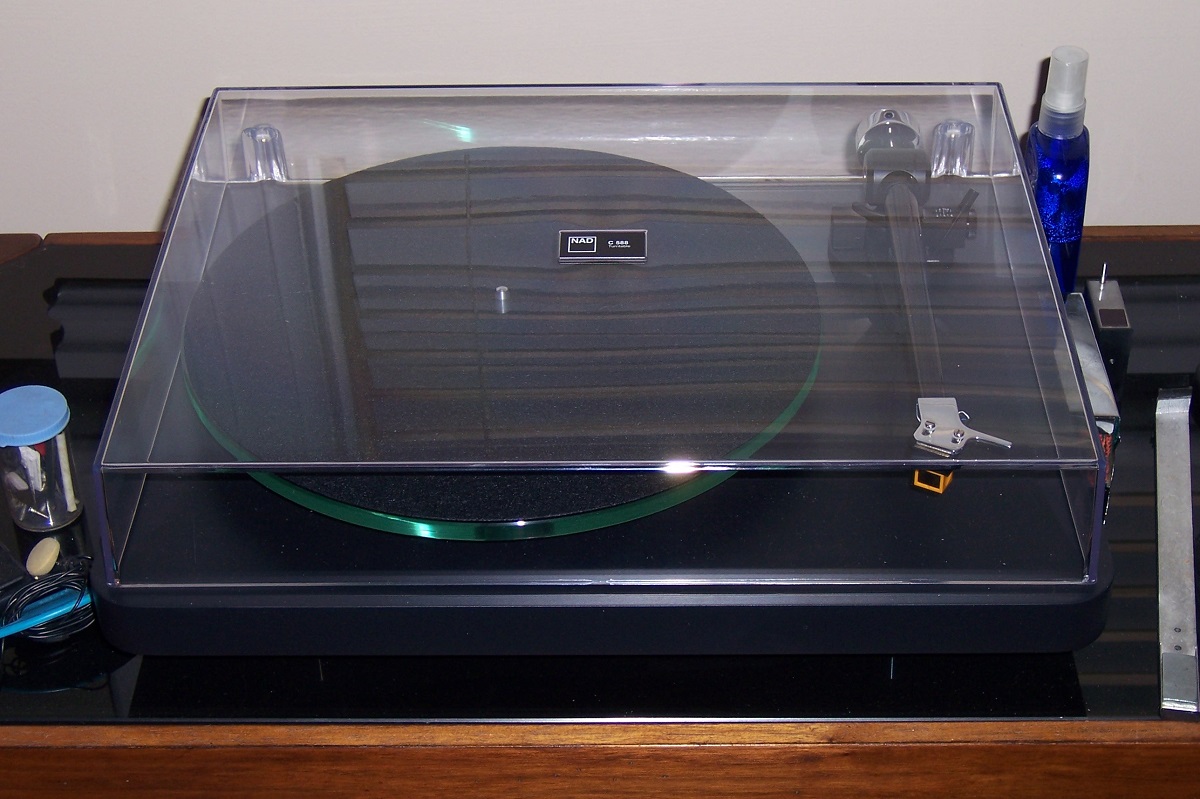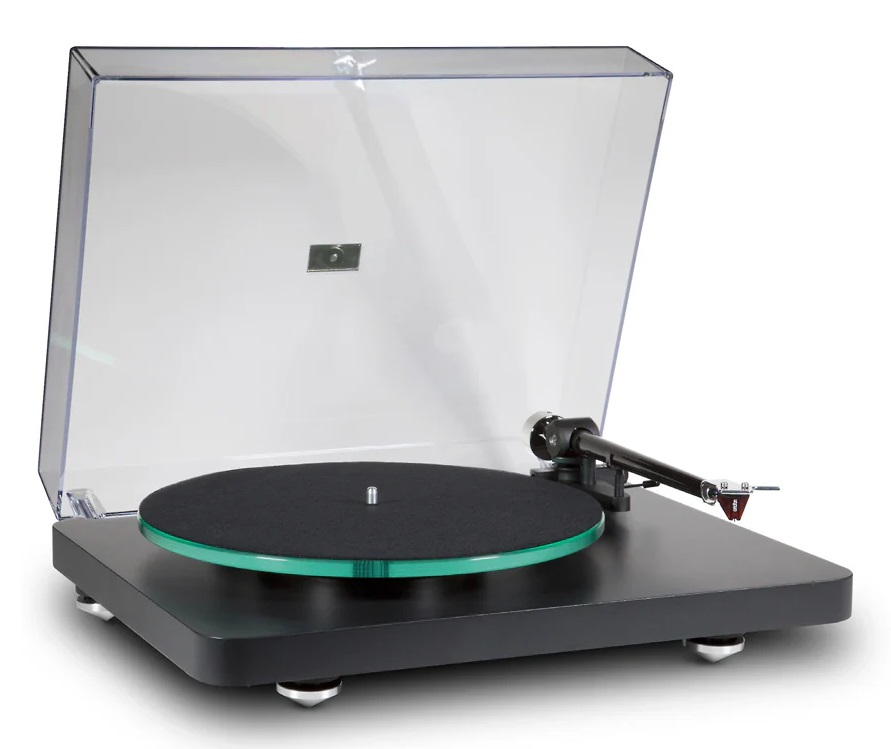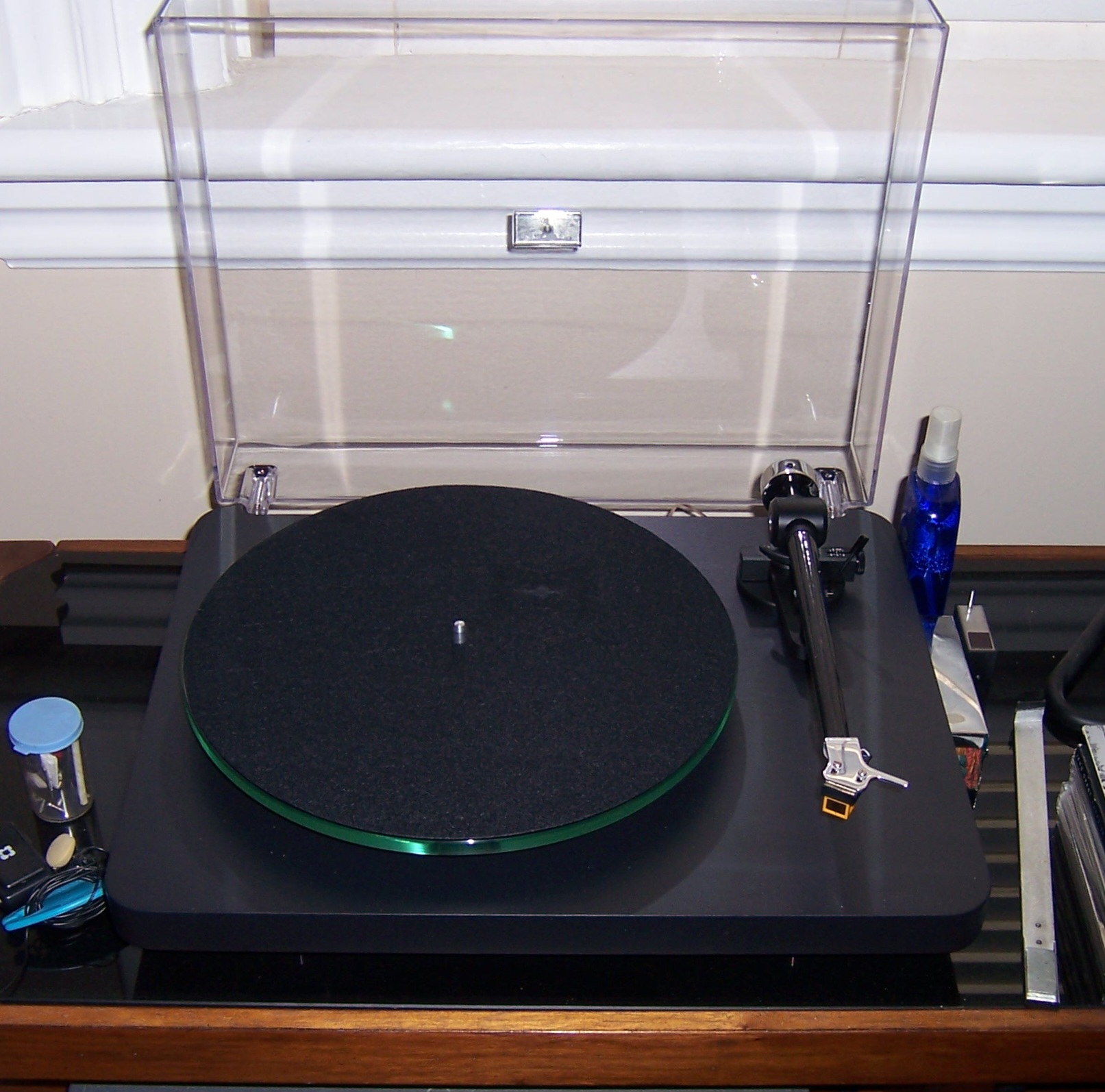NAD C588 Turntable with a Nagaoka MP-110 Cartridge – Smooth and Robust
‘In the House’ review by David Neice
MSRP with stock Ortofon 2M Red Cartridge – $1199 Canadian.
Nagaoka MP-110 high-output cartridge – $219 Canadian.
Verdict: While the NAD turntable comes standard with an Ortofon 2M Red cartridge, we thought it would be useful to upgrade that with a Nagaoka MP-110 cartridge, and the final results bore out our wishes. So this is a review of the NAD-NAG combo! (the stock images in this review show the factory-fitted Ortofon)
The NAD C588 turntable is the top of NAD’s offerings for turntables and while the parts are specified by NAD, they are manufactured (and likely assembled) by Pro-Ject. This is a plinth based turntable (unsuspended), belt driven and fully manual in nature.
In any case, this product is a delight to look at and listen to, and the sound can best be characterized as both ‘smooth and robust’. I tend to assign most of these sonic characteristics to the beautiful nine-inch carbon fibre arm that accompanies the turntable, which is easy to use, a solid performer and a treat to behold.
If you want to explore options at this price point, the NAD C588 ought to be on your short list. The Nagaoka MP-110 cartridge adds a dose of refinement to the package and is well worth the extra expense. Overall this combo is therefore firmly recommended by Wall of Sound.
Description
The NAD C588 turntable comes carefully packaged with several accessories that will benefit owners. The turntable is fully manual and is a sleek package with a superb tonearm and a solid glass platter. The on-off switch is found underneath the plinth on the left side.
There are four metal feet and they are appropriately deadened with elastomer polymer. Around the back there is a port connection to attach a separate power supply, two audio grade RCA outlets, and a grounding terminal. In the box you will find a very nice RCA cable with a ground wire that allows attachment to either your amplifier or receiver (if so equipped with a moving-magnet phono preamp), or else for connection to a separate phono stage amplifier. (Footnote 1)
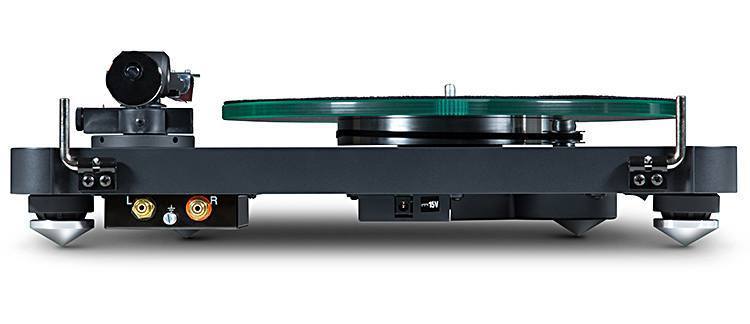 The lid is hinged and swings easily. The platter is easily lifted off and includes a removable felt platter mat that I highly recommend. Set into the plinth is a precision AC motor that takes in a 15V DC supply from a wall-wart PSU and generates a stable and smooth AC signal to drive the motor. You change the speed of the turntable (from 33 and 1/3 to 45) by lifting off the platter and changing the position of the belt on the motor spindle. All this is detailed in the accompanying manual.
The lid is hinged and swings easily. The platter is easily lifted off and includes a removable felt platter mat that I highly recommend. Set into the plinth is a precision AC motor that takes in a 15V DC supply from a wall-wart PSU and generates a stable and smooth AC signal to drive the motor. You change the speed of the turntable (from 33 and 1/3 to 45) by lifting off the platter and changing the position of the belt on the motor spindle. All this is detailed in the accompanying manual.
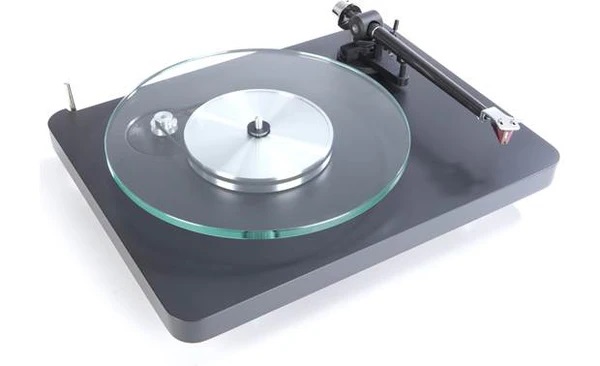 Below the 10mm-thick glass platter sits an aluminum alloy sub platter that is machined. The quality of this sub-platter and the spindle’s fit with the bearing in the well it sits in determines to a large extent the quality of the sound that emanates from any turntable. Bearing quality is a major feature of turntable performance; reducing mechanical friction increases signal:noise ratio.
Below the 10mm-thick glass platter sits an aluminum alloy sub platter that is machined. The quality of this sub-platter and the spindle’s fit with the bearing in the well it sits in determines to a large extent the quality of the sound that emanates from any turntable. Bearing quality is a major feature of turntable performance; reducing mechanical friction increases signal:noise ratio.
The turntable’s nine-inch arm deserves special mention. Carbon fibre arms are rare at this price level and this one is a beauty. It has a fixed headshell, which makes changing cartridges more laborious, but this also equates to better rigidity. The fit and finish of the arm makes it a treat to see and hear.
The arm has an inbuilt adjustment for applying anti-skating force, and stylus pressure is set with the large underslung counterweight. When we swapped cartridges to the Nagaoka we were able to set the stylus pressure within a range of .01 grams with a digital stylus pressure gauge. This arm can accommodate a moving coil cartridge should an owner wish to upgrade in future. (Footnote 2)
Of note is the accuracy of the arm lift mechanism. This is often a weak point on some otherwise fine arms. On a fully manual turntable it is necessary to have a lifter mechanism that drops the needle at the precise beginning of the record and lifts it cleanly and effectively at any point. The NAD performs the job with no stress – the cueing mechanism on this turntable is rock solid. Never once did I detect the slightest tendency not to drop (or lift) the needle dead square. Audiophiles with lots of manual turntable experience know what I am talking about here and this is really quite exemplary performance.
Finally, a solid plinth turntable without suspension must be shielded from resonances such as footfalls and finger taps. In this regard the NAD C588 does the required job and finger taps on the solid plinth did not yield any needle jumps or other anomalies although these taps were audible through the speakers as they are amplified by the cartridge.
All in all the NAD C588 is a handsome turntable with an exceptionally good tone arm that will do it’s owner proud. (Footnote 3)
Sound Quality
Given the solid build quality of the NAD C588 turntable I developed some high expectations about performance which were thankfully met. For the accompanying equipment I used my Parasound Zphono preamp stage, Unison Research ‘Simply Italy’ amplifier and Spendor Classic 3/1 speakers.
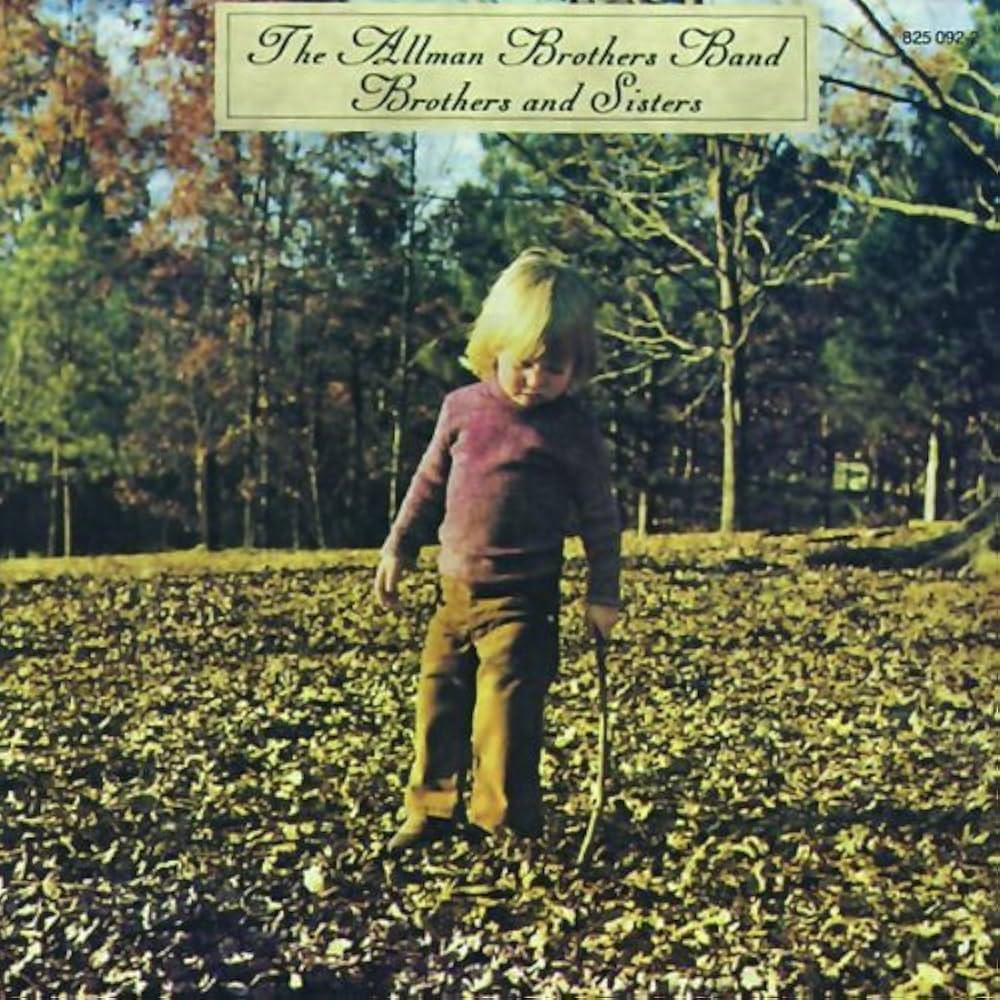 First up for a listen was the masterpiece ‘Jessica’ from the Allman Brothers album, Brothers and Sisters. Written by the guitarist Dickey Betts, it is a long rollicking instrumental piece and a tribute to his daughter with the fine piano accompaniment played by Chuck Leavell. I consider this to be the finest track recorded by the Allman Brothers after the death of Duane Allman. Fortunately I have a pristine vinyl copy.
First up for a listen was the masterpiece ‘Jessica’ from the Allman Brothers album, Brothers and Sisters. Written by the guitarist Dickey Betts, it is a long rollicking instrumental piece and a tribute to his daughter with the fine piano accompaniment played by Chuck Leavell. I consider this to be the finest track recorded by the Allman Brothers after the death of Duane Allman. Fortunately I have a pristine vinyl copy.
From the first needle drop the NAD turntable and Nagaoka cartridge were able to capture the dominant energy of the track, and I immediately started to bounce around in my chair. Of particular note was the fine rendering of Chuck Leavell’s piano work where the dimensions of the piano were clearly evident and the tonal quality was superb.
This track is dominated by Dickey Betts’ masterful lead guitar work, and he blazes through several key changes as the rollicking unfolds. After seven minutes of this the listener is limp, and I must say that while I have heard this piece many times, I was gratified to see that the NAD-NAG combo was capable of impressing me once again with all the shining essence of the track.
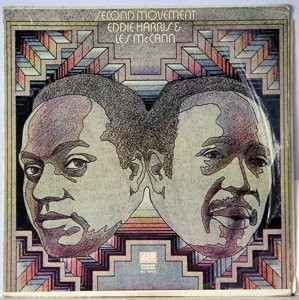 Up next was the jazz album Second Movement by Eddie Harris and Les McCann, and in particular the track ‘Set Us Free’, which is a free jazz inspired track that I love hearing. This album was studio recorded and I found a copy in a used record shop in Portland, Oregon. This particular album followed up on Swiss Movement, where Les McCann and Eddie Harris were recorded live at the Montreux Jazz festival in the 1960’s. I was turned on to that recording by a UK colleague when I was living in England in the late 1990s.
Up next was the jazz album Second Movement by Eddie Harris and Les McCann, and in particular the track ‘Set Us Free’, which is a free jazz inspired track that I love hearing. This album was studio recorded and I found a copy in a used record shop in Portland, Oregon. This particular album followed up on Swiss Movement, where Les McCann and Eddie Harris were recorded live at the Montreux Jazz festival in the 1960’s. I was turned on to that recording by a UK colleague when I was living in England in the late 1990s.
‘Set Us Free’ is just like ‘Jessica’; it’s a rollicking, flat out fun effort that clocks in at over ten minutes. The stated theme is infectious and your body has to move to the timing. What is required of this track is resolution and the NAD-NAG combo did a fine job of peeling back the many layers of the sound stage. Eddie Harris used an ‘Echoplex’ on his tenor saxophone, and thus could layer sound on sound through judicious electronic means. The NAD-NAG combo did not fail to unpack these layers while still rendering a robust tenor saxophone tone to the main lead strand.
Similarly, Les McCann toward the end of the track plays a long lead solo on his Hammond organ, and this relays the main musical theme of the piece in a brisk but nuanced pattern. Once again the instrument’s tonal colours are well represented and the piece just rocks along until its conclusion, all the while keeping the legs and feet of the listener in synch.
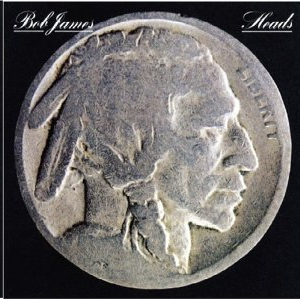 Up also for this review was the fine contemporary jazz album Heads by Bob James, a collaboration with Grover Washington. In particular, I listened closely to the tracks ‘We’re All Alone’ on side two, and ‘You Are So Beautiful’ on side one. These tracks could not be more different. ‘You Are So Beautiful’ is a languid and lengthy track that showcases Grover Washington on the soprano saxophone. There is a mournful purity about the soprano sax that is quite hard for hi-fi gear to get right (Footnote 4). The NAD-NAG combo lovingly conveyed the aching splendor that this instrument renders when played by a master.
Up also for this review was the fine contemporary jazz album Heads by Bob James, a collaboration with Grover Washington. In particular, I listened closely to the tracks ‘We’re All Alone’ on side two, and ‘You Are So Beautiful’ on side one. These tracks could not be more different. ‘You Are So Beautiful’ is a languid and lengthy track that showcases Grover Washington on the soprano saxophone. There is a mournful purity about the soprano sax that is quite hard for hi-fi gear to get right (Footnote 4). The NAD-NAG combo lovingly conveyed the aching splendor that this instrument renders when played by a master.
In contrast, ‘We’re All Alone’ is an uptempo extravaganza that highlights the interplay of Bob James on piano along with a bouncy vibraphone. This track just blasts out of the speakers with real authority, and the NAD-NAG combo releases all the fun of the track. Part of the track involves some ping-ponging between speakers and this is a real test of soundstaging and channel separation which the NAD-NAG combo passed with flying colours.
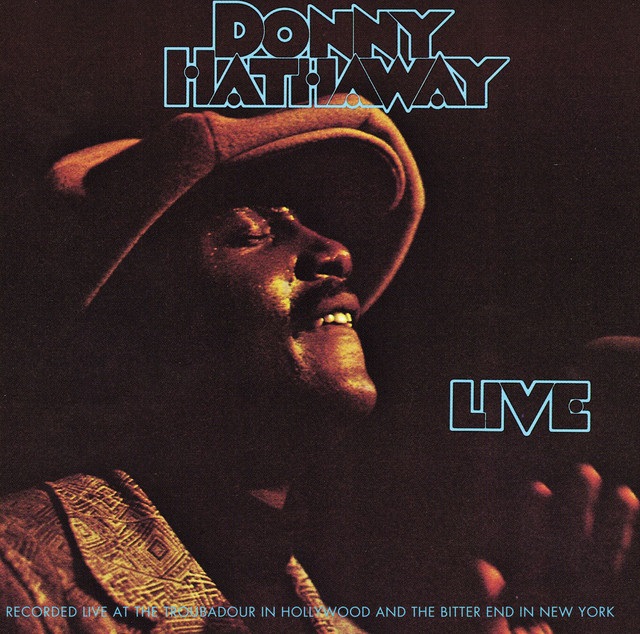 Next I turned to the Donny Hathaway Live album and in particular the track ‘I’m Just a Jealous Guy’. Donny Hathaway had a short life and career in the 1970s and he is often remembered for his duets with Roberta Flack. But he also had a spectacular solo career as a singer/songwriter and keyboard artist. This much loved artist was then lost to suicide, stemming from bouts of schizophrenia that he experienced.
Next I turned to the Donny Hathaway Live album and in particular the track ‘I’m Just a Jealous Guy’. Donny Hathaway had a short life and career in the 1970s and he is often remembered for his duets with Roberta Flack. But he also had a spectacular solo career as a singer/songwriter and keyboard artist. This much loved artist was then lost to suicide, stemming from bouts of schizophrenia that he experienced.
‘I’m Just a Jelaous Guy’ is an R&B-tinged romp that highlights Hathaway’s strong voice and keyboard artistry. It is one of my favourite tracks and this live recording is filled with audience appreciation. The NAD-NAG combo did a splendid job of conveying the excitement of the audience and the ability of Hathaway to build up momentum as the crowd was roused by his performance. The sense that you are one with the crowd is quite vividly reproduced and it never fails to thrill me.
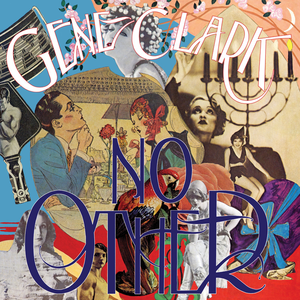 This was followed by Gene Clark’s masterpiece album No Other. This is a little-known recording of Gene Clark songs after the disbanding of the Byrds, where Clark played a key songwriting and vocal arrangement role. I never play just one track on this album. I always play it from beginning to end as there is a thematic flow to the songs that simply will not brook disruption. It was recorded during the period when ‘concept albums’ were being heralded as the future and where recordings were carefully curated into ‘whole pieces’.
This was followed by Gene Clark’s masterpiece album No Other. This is a little-known recording of Gene Clark songs after the disbanding of the Byrds, where Clark played a key songwriting and vocal arrangement role. I never play just one track on this album. I always play it from beginning to end as there is a thematic flow to the songs that simply will not brook disruption. It was recorded during the period when ‘concept albums’ were being heralded as the future and where recordings were carefully curated into ‘whole pieces’.
Of particular note during playback was the fine resolution of Gene Clark’s solid baritone voice. I have heard this album maybe a hundred times, so I’m very aware of any anomalies in his vocal reproduction. The recording is heavily layered with sound fragments from many instruments and with choral singers on nearly every track. Any tendency to lose Clark’s central voice is thus a loss in precision and discolours the thematic messages. The NAD-NAG combo had no trouble at all assembling and keeping all the parts of the tracks congruent. I just sat back and marveled at the almost unknown genius that was Gene Clark.
 Finally, I turned to yet another live jazz recording – this time Count Basie’s recording of Basie Jam, and more particularly the tracks ‘Doubling Blues’ and ‘Hanging Out’. ‘Doubling Blues’ is a brisk R&B instrumental track with a strong 4/4 bass and drum beat that emphasizes cymbal crashes. ‘Hanging Out’ is in contrast a slow, laconic instrumental number where brushed cymbals set the beat and each player is given a long solo slot, as befits traditional jazz performances.
Finally, I turned to yet another live jazz recording – this time Count Basie’s recording of Basie Jam, and more particularly the tracks ‘Doubling Blues’ and ‘Hanging Out’. ‘Doubling Blues’ is a brisk R&B instrumental track with a strong 4/4 bass and drum beat that emphasizes cymbal crashes. ‘Hanging Out’ is in contrast a slow, laconic instrumental number where brushed cymbals set the beat and each player is given a long solo slot, as befits traditional jazz performances.
In each case, my attention was focused on the use of cymbals for the timing of the beat. Brushed cymbals in particular are difficult to reproduce as the overtones are extensive, and fine detail is frequently lost. In ‘Hanging Out’, the brush slides around the cymbal in a circular fashion that sweeps forward and backward within the stereo soundstage. The veracity of this brushing either generates a real response in the listener or else the verisimilitude is lost.
I can say with some satisfaction that the NAD-NAG combo did a sterling job of maintaining the illusion that the drummer for Count Basie’s band was in the room with the listener. In addition, the solo performances of the band’s other excellent musicians were tonally accurate and complete. There was a strong unifying sense that this was a live recording of a world class band that was filled with the presence of the room in which it was recorded.
The above selections are only a sample of the many many recordings I spun up. At no time was I disappointed in the performance of the NAD-NAG combo. In truth I found this turntable combo to be pushing the envelope, and I would favourably compare it to entry level moving coil cartridges/tonearms. The NAD turntable and arm is really that good.
Conclusion
If you are shopping around for say something like a Rega 2 and you are looking to explore other options at this price point then the NAD C588 ought to be on your short list. The Nagaoka MP-110 cartridge ups the sonic game but is well worth the extra expense. This combo will certainly sing for its supper and is therefore firmly recommended.
Footnote 1: Noam Bronstein also included a superb Neotech RCA cable (NEI3004) in the package, which is made with Ohno Continuous Cast copper. I used this cable during the review period but during the listening sessions I used the stock cable. This Neotech cable is highly recommended as an upgrade anywhere that an RCA cable is needed. (MSRP $170 Canadian)
Footnote 2: A screw near the bearing housing can be loosened to allow the arm to be rotated to set azimuth correctly, and the whole affair can be raised and lowered to optimize vertical tracking angle (VTA).
Footnote 3: I must mention here that the turntable and arm are packed with a gauge that is used to set the horizontal tracking angle for potential changes in the cartridge used. This is a small but important detail and highlights how NAD always places the customer’s needs high on its list of priorities. I have never seen this before in a moderate cost turntable. It is an inexpensive but significant inclusion. Bravo NAD!
Footnote 4: If I could play only one instrument well, it would be the soprano saxophone.
Disclaimer: review samples were supplied by editor Noam Bronstein, who is also a dealer for the brands mentioned in this review.

